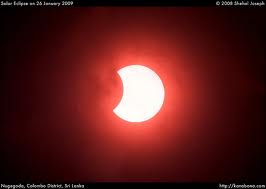The global solar industry is benefitting from a fundamental (and positive) re-rating from analysts and financial institutions, as the spread of grid parity grows into the world’s major electricity consumers.
Over the past few days, two major fund raisings for solar companies underpinned the attraction of solar in the US market, as leading solar installers Solar City and Vivint raised nearly $US1 billion between them (read more about that below).
But analysts at Deutsche Bank have also given the sector a major tick, boosting their stock tips for major solar companies by more than 20 per cent and lifting the price multiples for those valuations from 10 times earnings to 13 times.
This may seem just a piece of detail, but in the world of financial analysis it is significant, representing the growing confidence within the financial community that even solar manufacturers would soon be profitable.
This confidence is based on the view that solar is now at grid parity in many of the world’s major electricity markets. Deutsche Bank says the drivers for the solar market are not only diverse, but also sustainable.
While Japan has delivered the most “upside” growth (that, is above expectations) in 2013, Deutsche Bank expects China could be the upside market in 2014, with some 12-13GW of installations (nearly double the 2013 rate), the US could be upside market in 2015 as the solar leasing boom really takes off across the country, and emerging markets such as Chile and other new economies could drive upside in 2016.
Deutsche Bank noted that in the US, solar projects at the residential and commercial level are currently being done at power purchase agreements that are 20 per cent below the prevailing retail electricity prices.- this is despite the fact that US electricity prices tend to be cheaper than in Europe and solar systems costs are up to 30 per cent more expensive. But innovative financing models means that project owners are still able to generate 11 per cent per cent after-tax returns, and project returns could be even higher if investors were to more accurately model the residual value of solar systems after 20-25 years .
Deutsche Bank says solar demand in markets outside of Europe is now driven by policies and incentives that are “sustainable” because the burden on the rate payer is minimal. That’s because solar is competitive with traditional generation sources.
Even in Europe, where solar feed in tariffs have declined more than 50 per cent (in Germany they are at (€0.15/kWh vs €0.28/kWh retail electricity price, demand for small systems below 10kW is actually up year on year because solar is being used for self consumption.
Deutsche Bank says that most tier 1 Chinese solar companies are likely to operate at near 100% utilization rates, and this combined with a move into downstream business models will bring more into profitability. Consolidation will occur elsewhere in the market.
Other observations made by Deutsche include an expected surge in the Japanese market ahead of expected cuts to its feed in tariff in March, and a growing list of major projects in India,the US, South America, and the Middle East.
Given the increase “demand visibility” in 2014 and improving policy and financing environments, Deutsche Bank is raising its price target valuation multiples from 10 times earnings to 13 times. This means that the target price of companies such as Trina Solar and Yingli will jump 25 per cent to $US10 and $US23 respectively.
SolarCity and Vivint tap markets for $US1 billion
The hunger for investment in the booming solar market in the US, which is based almost exclusively around “zero-down” leasing models, has been highlighted by two successful fund raisings last week that totalled nearly $US1 billion.
SolarCity, the largest PV installer in the US, said it would raise almost $US400 million from a mix of stock and bonds, as it forecast that it would nearly double its anticipated 2013 installs of 278MW to between 475MW and 525MW in 2014. The new funds raised would help finance that expansion. SolarCity has also broadened its market position by buying sales firm Paramount Solar for $US120 million and mounting manufacturer Zep Solar for $US158 million.
Meanwhile, Vivint Solar, which is owned by investment company Blackstone Group and is reportedly the second biggest residential solar installer in the US, has raised $US540 million to support its own solar leasing business. The funds came from two undisclosed financial institutions and follow another $US200 million raising announced in August. Blackstone bought Vivint last December for $2 billion. The company designs, installs and maintains solar systems in California, Hawaii, Maryland, Massachusetts, New Jersey, New York and Washington, DC, and also has a home security business.
And, in other news ….
China has announced plans to considerably increase its level of “distributed solar” generation – projects that supply electricity to customers nearby – to 20GW by 2015. Wu Xinxiong, head of the National Energy Administration, said in a speech posted on the agency’s website and reported by Reuters, that this reflects a 10-fold increase to the capacity at the end of 2012. The strategy is designed to avoid overloading grids that have struggled to absorb the recent growth in solar and wind-energy generation. According to Wu, China will add 6GW of distributed solar power next year. More than 80 per cent of that capacity will be in the regions around Shanghai, Guangzhou and Beijing.
Gestamp Solar has teamed up with Barclays European Infrastructure Group to manage over 29MW of solar PV installations in Italy.
A company established by the government of Punjab in Pakistan is seeking to develop 100MW of solar PV projects at the Quaid-e-Azam solar park. It has called for tenders for the project’s design, supply, construction, turnkey installation and O&M.










